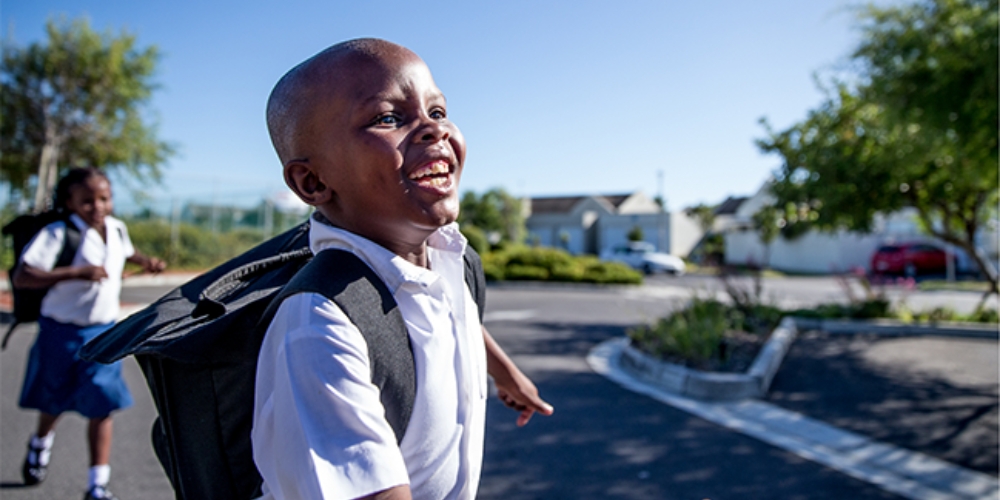Introducing The Rigor Project
According to the “Teachers Know Best” report from the Bill & Melinda Gates Foundation, teachers are excited about personalized learning, but they have expressed concern that digital content is not rigorous enough. In speaking with educators across the country, the need for rigorous content has been a recurring theme. Ami Gandhi, who has been teaching for more than a decade and is now the Director of Personalized Learning at Intrinsic Schools in Chicago, told me, “The whole time I have been teaching rigor has been an issue. There is definitely a need to fill.”
To begin to address this concern around rigor, PowerMyLearning recently received $4.5 million from the Gates Foundation, $3 million of which will support the creation of more rigorous personalized content that will start releasing in late 2018.
For this month’s column, I spoke with PowerMyLearning’s content management team, Paul Thomas, Senior Director of Instruction, and Caryn Rogoff, Director of Content, who are spearheading our Gates-funded work around developing rigorous personalized content as part of what we call The Rigor Project.
Elisabeth: What does the word “rigor” mean?
Paul: Most people think rigor is about giving students longer problems, or harder numbers, or 8th grade work when they are in the 6th grade. But this is not rigor. Rigor is about the cognitive complexity of the tasks students are completing. There are already several very effective frameworks that exist to describe rigor (e.g., Norman Webb’s the Depth of Knowledge levels) and we will be building on those.
Elisabeth: So is the problem that there is not rigorous content out there or is the problem that there is not rigorous personalized content out there?
Caryn: There is already excellent rigorous content out there being used by teachers across the country, but much of it is print-based – even if teachers access it from a website – and therefore not easily customizable. So building in personalization is a real challenge. The Rigor Project is all about using the power of easily customizable and interactive digital content to facilitate personalization and scaffolding of rigorous content in an engaging way that also builds in an element of student agency.
Elisabeth: How will The Rigor Project meet teachers’ needs for content that is both rigorous and personalized or granular at the same time?
Caryn: We will meet this need by creating Rigorous Playlists. Math Playlists (which we have been funded to build) will be comprised of digital learning activities curated from the web, assessment questions, and other content that helps teachers and students see the coherence of it all. We have not yet been funded to build English Language Arts (ELA) Playlists, but expect these to include complex texts, supplementary materials that build background knowledge, and high-quality sequencing of questions to get at that higher level of rigorous thinking. When used in our platform, teachers will be able to modify the Playlists by drawing on a bank of digital learning activities and assessment questions tagged to levels of rigor. Teachers will also be able to add in their own content (such as their own videos).
Elisabeth: What if educators want to use these Playlists in a different platform?
Paul: Our goal is to create a Playlists Player so districts and CMOs can also embed our Rigorous Playlists in a different platform if that’s what they prefer.
Elisabeth: How does rigor vary across the different content areas?
Paul: In math we often talk about rigor using a tri-fold filter: conceptual understanding, procedural fluency, and application. It’s not just about always doing things with applications or always doing things with conceptual understanding, but balancing all three along with cognitive complexity.
Caryn: In ELA, rigor is about students tackling complex texts. Research shows that the key determinant of how well kids do on literacy tests and how well they do in college really depends on working through grade-level complex texts. In the past, when educators felt they had students who were not ready for complex texts, educators offered these students “simplified” texts; but if we do that, we’re doing kids a real disservice. In fact, helping kids to work through those harder, more rigorous materials is what really elevates their skill. The trick here is giving teachers the tools they need to help their students access complex texts, such as providing students with the necessary scaffolding and background knowledge.
Elisabeth: So instead of lowering the bar, we enable teachers to help their students jump over the bar?
Caryn: Exactly. And this is really an equity issue because we’re often not getting kids the rigorous content that enables them to be reading at a level that they need to succeed and pushes them to take rigorous courses.
Paul: To add to what Caryn is saying, there is research that indicates the rigor of a student’s high school course selections strongly correlates to successful college completion rates – a much different metric than high school graduation or college admission rates. This is about the positive relationship between rigor and college graduation. The Rigor Project is a step in the direction of getting students towards those rigorous course selections – getting them to want to take difficult courses, which will ultimately pay off down the road.
Elisabeth: We’re talking about rigor and developing this rigorous material – but what do teachers need to put in place so that students are willing to exert themselves to try to jump over that bar?
Paul: Readiness is key. If you give me a really high bar to jump over, and I’m not prepared – I’m probably not going to make it over, and I’m going to be stressed about it. On the other hand, if I’m prepared and I work through a series of exercises to gain the required strength and expertise, I’m still going to feel challenged, but I’ll be more confident and optimistic in my ability to make it over. Providing scaffolding and the opportunity to delve into the readiness is really about personalization. We’re able to show the teacher where a student’s particular skill set fits into this sequence and what came before so they know what the prerequisite skills are, and they know what to provide students so that they have a winning shot at getting through this content. As a result, teachers can see that coherence, see those progressions, and see the foundational knowledge that’s required.
Elisabeth: I’m wondering if there’s also a third dimension that relates to relationships. What’s the role of adults in students’ lives in encouraging students to try and stick with things they might not feel they are good at? How do we get kids to stretch themselves?
Paul: This is the strength of the PowerMyLearning approach. We’re not trying to engineer the teacher or the parent out of the process. We’re supporting teachers as they work with students and invite students’ families into the learning process. That relationship with the student is about trust, responsiveness, personalization and customization – those are all critical and in our DNA as an organization. We’re not trying to work around teachers or parents; we’re working to support strong relationships.
Elisabeth: Thank you, Paul and Caryn for speaking with me today about this exciting project.
Readers, as always, we would love to hear from you. We invite you to share your challenges and successes with combining rigorous instruction and personalized learning.
This article originally appeared in PowerMyLearning’s February 2017 Newsletter. Learn more about PowerMyLearning by visiting our website and follow us on Facebook and Twitter.


